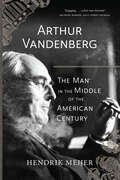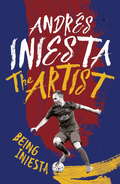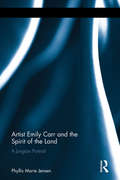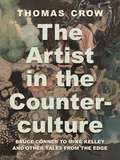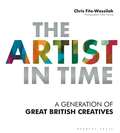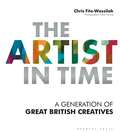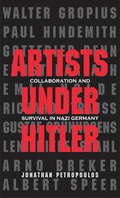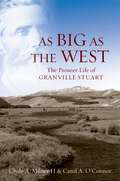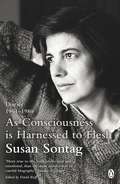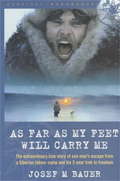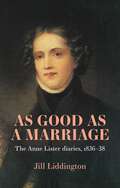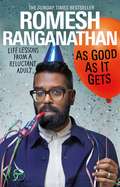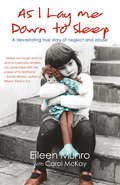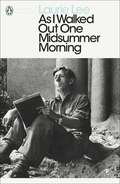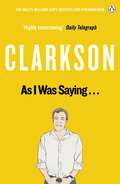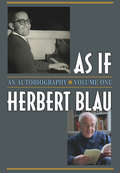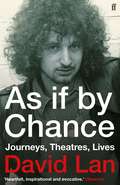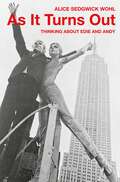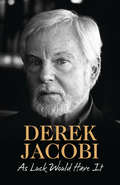- Table View
- List View
Arthur Vandenberg: The Man in the Middle of the American Century
by Hendrik MeijerThe idea that a Senator—Republican or Democrat—would put the greater good of the country ahead of party seems nearly impossible to imagine in our current climate of gridlock and divisiveness. But this hasn’t always been the case. Arthur H. Vandenberg (1884–1951), Republican from Grand Rapids, Michigan, was the model of a consensus builder, and the coalitions he spearheaded continue to form the foundation of American foreign and domestic policy today. Edward R. Murrow called him “the central pivot of the entire era,” yet, despite his significance, Vandenberg has never received the full public attention he is due—until now. With this authoritative biography, Hendrik Meijer reveals how Vandenberg built and nurtured the bipartisan consensus that created the American Century. Originally the editor and publisher of the Grand Rapids Herald, Vandenberg was appointed and later elected to the Senate in 1928, where he became an outspoken opponent of the New Deal and a leader among the isolationists who resisted FDR’s efforts to aid European allies at the onset of World War II. But Vandenberg soon recognized the need for unity at the dawn of a new world order; and as a Republican leader, he worked closely with Democratic administrations to build the strong bipartisan consensus that established the Marshall Plan, the United Nations, and NATO. Vandenberg, as Meijer reveals, was instrumental in organizing Congressional support for these monumental twentieth-century foreign policy decisions. Vandenberg’s life and career offer powerful lessons for today, and Meijer has given us a story that suggests an antidote to our current democratic challenges. After reading this poignant biography, many will ask: Where is the Vandenberg of today?
Arthur Vandenberg: The Man in the Middle of the American Century
by Hendrik MeijerThe idea that a Senator—Republican or Democrat—would put the greater good of the country ahead of party seems nearly impossible to imagine in our current climate of gridlock and divisiveness. But this hasn’t always been the case. Arthur H. Vandenberg (1884–1951), Republican from Grand Rapids, Michigan, was the model of a consensus builder, and the coalitions he spearheaded continue to form the foundation of American foreign and domestic policy today. Edward R. Murrow called him “the central pivot of the entire era,” yet, despite his significance, Vandenberg has never received the full public attention he is due—until now. With this authoritative biography, Hendrik Meijer reveals how Vandenberg built and nurtured the bipartisan consensus that created the American Century. Originally the editor and publisher of the Grand Rapids Herald, Vandenberg was appointed and later elected to the Senate in 1928, where he became an outspoken opponent of the New Deal and a leader among the isolationists who resisted FDR’s efforts to aid European allies at the onset of World War II. But Vandenberg soon recognized the need for unity at the dawn of a new world order; and as a Republican leader, he worked closely with Democratic administrations to build the strong bipartisan consensus that established the Marshall Plan, the United Nations, and NATO. Vandenberg, as Meijer reveals, was instrumental in organizing Congressional support for these monumental twentieth-century foreign policy decisions. Vandenberg’s life and career offer powerful lessons for today, and Meijer has given us a story that suggests an antidote to our current democratic challenges. After reading this poignant biography, many will ask: Where is the Vandenberg of today?
Arthur Vandenberg: The Man in the Middle of the American Century
by Hendrik MeijerThe idea that a Senator—Republican or Democrat—would put the greater good of the country ahead of party seems nearly impossible to imagine in our current climate of gridlock and divisiveness. But this hasn’t always been the case. Arthur H. Vandenberg (1884–1951), Republican from Grand Rapids, Michigan, was the model of a consensus builder, and the coalitions he spearheaded continue to form the foundation of American foreign and domestic policy today. Edward R. Murrow called him “the central pivot of the entire era,” yet, despite his significance, Vandenberg has never received the full public attention he is due—until now. With this authoritative biography, Hendrik Meijer reveals how Vandenberg built and nurtured the bipartisan consensus that created the American Century. Originally the editor and publisher of the Grand Rapids Herald, Vandenberg was appointed and later elected to the Senate in 1928, where he became an outspoken opponent of the New Deal and a leader among the isolationists who resisted FDR’s efforts to aid European allies at the onset of World War II. But Vandenberg soon recognized the need for unity at the dawn of a new world order; and as a Republican leader, he worked closely with Democratic administrations to build the strong bipartisan consensus that established the Marshall Plan, the United Nations, and NATO. Vandenberg, as Meijer reveals, was instrumental in organizing Congressional support for these monumental twentieth-century foreign policy decisions. Vandenberg’s life and career offer powerful lessons for today, and Meijer has given us a story that suggests an antidote to our current democratic challenges. After reading this poignant biography, many will ask: Where is the Vandenberg of today?
Arthur Vandenberg: The Man in the Middle of the American Century
by Hendrik MeijerThe idea that a Senator—Republican or Democrat—would put the greater good of the country ahead of party seems nearly impossible to imagine in our current climate of gridlock and divisiveness. But this hasn’t always been the case. Arthur H. Vandenberg (1884–1951), Republican from Grand Rapids, Michigan, was the model of a consensus builder, and the coalitions he spearheaded continue to form the foundation of American foreign and domestic policy today. Edward R. Murrow called him “the central pivot of the entire era,” yet, despite his significance, Vandenberg has never received the full public attention he is due—until now. With this authoritative biography, Hendrik Meijer reveals how Vandenberg built and nurtured the bipartisan consensus that created the American Century. Originally the editor and publisher of the Grand Rapids Herald, Vandenberg was appointed and later elected to the Senate in 1928, where he became an outspoken opponent of the New Deal and a leader among the isolationists who resisted FDR’s efforts to aid European allies at the onset of World War II. But Vandenberg soon recognized the need for unity at the dawn of a new world order; and as a Republican leader, he worked closely with Democratic administrations to build the strong bipartisan consensus that established the Marshall Plan, the United Nations, and NATO. Vandenberg, as Meijer reveals, was instrumental in organizing Congressional support for these monumental twentieth-century foreign policy decisions. Vandenberg’s life and career offer powerful lessons for today, and Meijer has given us a story that suggests an antidote to our current democratic challenges. After reading this poignant biography, many will ask: Where is the Vandenberg of today?
The Artist: Being Iniesta
by Andrés IniestaAndrés Iniesta is the Barcelona and Spain legend, rated by the likes of Cristiano Ronaldo, Lionel Messi, Luis Suarez and Paul Scholes as one of the greatest footballers of all time. This is the thinking fan's footballer with a thinking fan's football book.Andrés Iniesta was twelve years old when scouts invited him into Barcelona's famous La Masia academy. Shortly after he joined the club, Barca legend Pep Guardiola remarked of him, 'This lad is going to retire us all.'Iniesta rapidly became a permanent fixture in the Barca midfield, propelling the club to a raft of trophies, including eight La Liga championships and four Champions League titles. With his country he has won the European Championship twice, and scored the winning goal in the 2010 World Cup final.Behind the wonderfully graceful passing and movement, and the accolades and trophies he has garnered, there exists an intelligent and thoughtful man who, until now, has let his beautifully skilful feet do the talking. In The Artist: Being Iniesta, the Spanish maestro paints a vivid self-portrait, in his own words but also in those of his coaches, team-mates, opponents, friends and family. The result is intriguing.
Artist Emily Carr and the Spirit of the Land: A Jungian Portrait
by Phyllis Marie JensenEmily Carr, often called Canada’s Van Gogh, was a post-impressionist explorer, artist and writer. In Artist Emily Carr and the Spirit of the Land Phyllis Marie Jensen draws on analytical psychology and the theories of feminism and social constructionism for insights into Carr’s life in the late Victorian period and early twentieth century. Presented in two parts, the book introduces Carr’s émigré English family and childhood on the "edge of nowhere" and her art education in San Francisco, London and Paris. Travels in the wilderness introduced her to the totem art of the Pacific Northwest coast at a time Aboriginal art was undervalued and believed to be disappearing. Carr vowed to document it before turning to spirited landscapes of forest, sea and sky. The second part of the book presents a Jungian portrait of Carr, including typology, psychological complexes, and archetypal features of personality. An examination the individuation process and Carr’s embracement of transcendental philosophy reveals the richness of her personality and artistic genius. Artist Emily Carr and the Spirit of the Land provides captivating reading for analytical psychologists, academics and students of Jungian studies, art history, health, gender and women’s studies.
Artist Emily Carr and the Spirit of the Land: A Jungian Portrait
by Phyllis Marie JensenEmily Carr, often called Canada’s Van Gogh, was a post-impressionist explorer, artist and writer. In Artist Emily Carr and the Spirit of the Land Phyllis Marie Jensen draws on analytical psychology and the theories of feminism and social constructionism for insights into Carr’s life in the late Victorian period and early twentieth century. Presented in two parts, the book introduces Carr’s émigré English family and childhood on the "edge of nowhere" and her art education in San Francisco, London and Paris. Travels in the wilderness introduced her to the totem art of the Pacific Northwest coast at a time Aboriginal art was undervalued and believed to be disappearing. Carr vowed to document it before turning to spirited landscapes of forest, sea and sky. The second part of the book presents a Jungian portrait of Carr, including typology, psychological complexes, and archetypal features of personality. An examination the individuation process and Carr’s embracement of transcendental philosophy reveals the richness of her personality and artistic genius. Artist Emily Carr and the Spirit of the Land provides captivating reading for analytical psychologists, academics and students of Jungian studies, art history, health, gender and women’s studies.
The Artist in the Counterculture: Bruce Conner to Mike Kelley and Other Tales from the Edge
by Thomas CrowHow California’s counterculture of the 1960s to 1980s profoundly shaped—and was shaped by—West Coast artistsThe 1960s exert a special fascination in modern art. But most accounts miss the defining impact of the period’s youth culture, largely incubated in California, on artists who came of age in that decade. As their prime exemplar, Bruce Conner, reminisced, “I did everything that everybody did in 1967 in the Haight-Ashbury. . . . I would take peyote and walk out in the streets.” And he vividly channeled those experiences into his art, while making his mark on every facet of the psychedelic movement—from the mountains of Mexico with Timothy Leary to the rock ballrooms of San Francisco to the gilded excesses of the New Hollywood. In The Artist in the Counterculture, Thomas Crow tells the story of California art from the 1960s to the 1980s—some of the strongest being made anywhere at the time—and why it cannot be understood apart from the new possibilities of thinking and feeling unleashed by the rebels of the counterculture.Crow reevaluates Conner and other key figures—from Catholic activist Corita Kent to Black Panther Emory Douglas to ecological witness Bonnie Ora Sherk—as part of a generational cohort galvanized by resistance to war, racial oppression, and environmental degradation. Younger practitioners of performance and installation carried the mindset of rebellion into the 1970s and 1980s, as previously excluded artists of color moved to the forefront in Los Angeles. Mike Kelley, their contemporary, remained unwaveringly true to the late countercultural flowering he had witnessed at the dawn of his career.The result is a major new account of the counterculture’s enduring influence on modern art.
The Artist in Time: A Generation of Great British Creatives
by Chris Fite-WassilakThe Artist in Time brings together twenty creatives from across the UK, with photographs and interviews that disclose their daily working habits and motivations. All born before 1950, this is a collective portrait of a generation who have shaped our artistic landscape. They provide a range of different answers to the question 'what makes an artist?', and a set of insights into what makes up a creative life. Giving the reader access to the studio and working spaces of a diverse group of painters, poets, choreographers, filmmakers, illustrators, musicians, photographers, sculptors, writers and creators, The Artist in Time is a handbook for creativity and inspiration, made up of artists from all backgrounds who have all in their own way shaped, and continue to shape, the creative landscape of the United Kingdom.
The Artist in Time: A Generation of Great British Creatives
by Chris Fite-WassilakThe Artist in Time brings together twenty creatives from across the UK, with photographs and interviews that disclose their daily working habits and motivations. All born before 1950, this is a collective portrait of a generation who have shaped our artistic landscape. They provide a range of different answers to the question 'what makes an artist?', and a set of insights into what makes up a creative life. Giving the reader access to the studio and working spaces of a diverse group of painters, poets, choreographers, filmmakers, illustrators, musicians, photographers, sculptors, writers and creators, The Artist in Time is a handbook for creativity and inspiration, made up of artists from all backgrounds who have all in their own way shaped, and continue to shape, the creative landscape of the United Kingdom.
Artists Under Hitler: Collaboration and Survival in Nazi Germany
by Jonathan Petropoulos“What are we to make of those cultural figures, many with significant international reputations, who tried to find accommodation with the Nazi regime?” Jonathan Petropoulos asks in this exploration of some of the most acute moral questions of the Third Reich. In his nuanced analysis of prominent German artists, architects, composers, film directors, painters, and writers who rejected exile, choosing instead to stay during Germany’s darkest period, Petropoulos shows how individuals variously dealt with the regime’s public opposition to modern art. His findings explode the myth that all modern artists were anti-Nazi and all Nazis anti-modernist. Artists Under Hitler closely examines cases of artists who failed in their attempts to find accommodation with the Nazi regime (Walter Gropius, Paul Hindemith, Gottfried Benn, Ernst Barlach, Emil Nolde) as well as others whose desire for official acceptance was realized (Richard Strauss, Gustaf Gründgens, Leni Riefenstahl, Arno Breker, Albert Speer). Collectively these ten figures illuminate the complex cultural history of Nazi Germany, while individually they provide haunting portraits of people facing excruciating choices and grave moral questions.
As Big as the West: The Pioneer Life of Granville Stuart
by Clyde A. Milner II Carol A. O'ConnorGranville Stuart (1834-1918) is a quintessential Western figure, a man whose adventures rival those of Wyatt Earp, Buffalo Bill, or Sitting Bull, and who embodied many of the contradictions of America's westward expansion. Stuart collected guns, herded cattle, mined for gold, and killed men he thought outlaws. But he also taught himself Shoshone, French, and Spanish, denounced formal religion, married a Shoshone woman, and eventually became a United States diplomat. In this fascinating biography, Clyde A. Milner II and Carol A. O'Connor, co-editors of the acclaimed Oxford History of the American West, trace Stuart's remarkable trajectory from his birth in Virginia, through his formative years in the agricultural settlements of Iowa and the mining camps of Gold Rush California, to his rough-and-tumble life in Montana and his rise to prominence as a public figure. Along the way, we see Granville and his brother James battling bandits and horsethieves and becoming leaders of the new Montana territory. The authors explore Granville's life as a cattleman, including his role as the leader of a vigilante force, known as "Stuart's Stranglers," responsible for several hangings in 1884, his abandonment of his half-Shoshone children after his second marriage, his government service in offices ranging from the head of the Butte Public Library to U.S. Minister to Paraguay and Uruguay, and his final years, during which he composed a memoir, Forty Years on the Frontier, still widely read for its dramatic account of the era. Written with narrative flair and a lively awareness of current issues in Western history, As Big as the West fully illuminates the conflicting realities of the frontier, where a man could speak of wiping out "half-breeds" while fathering 11 mixed-race children, and go from vigilante to diplomat in the space of a few years.
As Big as the West: The Pioneer Life of Granville Stuart
by Clyde A. Milner II Carol A. O'ConnorGranville Stuart (1834-1918) is a quintessential Western figure, a man whose adventures rival those of Wyatt Earp, Buffalo Bill, or Sitting Bull, and who embodied many of the contradictions of America's westward expansion. Stuart collected guns, herded cattle, mined for gold, and killed men he thought outlaws. But he also taught himself Shoshone, French, and Spanish, denounced formal religion, married a Shoshone woman, and eventually became a United States diplomat. In this fascinating biography, Clyde A. Milner II and Carol A. O'Connor, co-editors of the acclaimed Oxford History of the American West, trace Stuart's remarkable trajectory from his birth in Virginia, through his formative years in the agricultural settlements of Iowa and the mining camps of Gold Rush California, to his rough-and-tumble life in Montana and his rise to prominence as a public figure. Along the way, we see Granville and his brother James battling bandits and horsethieves and becoming leaders of the new Montana territory. The authors explore Granville's life as a cattleman, including his role as the leader of a vigilante force, known as "Stuart's Stranglers," responsible for several hangings in 1884, his abandonment of his half-Shoshone children after his second marriage, his government service in offices ranging from the head of the Butte Public Library to U.S. Minister to Paraguay and Uruguay, and his final years, during which he composed a memoir, Forty Years on the Frontier, still widely read for its dramatic account of the era. Written with narrative flair and a lively awareness of current issues in Western history, As Big as the West fully illuminates the conflicting realities of the frontier, where a man could speak of wiping out "half-breeds" while fathering 11 mixed-race children, and go from vigilante to diplomat in the space of a few years.
As Consciousness is Harnessed to Flesh: Diaries 1964-1980
by Susan SontagAs Consciousness is Harnessed to Flesh reveals the inner life of Susan Sontag.Providing a unique insight into the mind of one of the leading intellectuals of the modern age, Susan Sontag's As Conscious is Harnessed to Flesh chronicles the cultural, moral, and political journeys of this renowned critic and artist at the height of her powers.As Consciousness Is Harnessed to Flesh follows Sontag through the turbulent years of the late 1960s - from her trip to Hanoi at the peak of the Vietnam War to her time making films in Sweden - up to 1980, just before the beginning of the Reagan era. This is an invaluable record of the inner workings of one of the most inquisitive and analytical thinkers of the twentieth century at the height of her power. It is also a remarkable document of on individual's political and moral awakening.'More true to life, both intellectual and emotional, than the most artful novel or careful biography' Sunday Telegraph'Gold dust' Sunday Times'A powerful self-portrait emerges. In its fragmentation . . . and passion, its combination of the erudite and the everyday, it is more true to life, both intellectual and emotional, than the most artful novel or careful biography. It may well be that Sontag's diaries will come to be seen as just as brilliant and important as anything she wrote' Sunday Telegraph'Mesmerising, fascinating' Guardian'Express the fullness and diversity of her intellectual curiosity. Revelatory in the most profound sense: they are existential fragments, self-selected thoughts, emotions, reactions . . . arising in one of the most remarkable minds of the twentieth century' The TimesOne of America's best-known and most admired writers, Susan Sontag was also a leading commentator on contemporary culture until her death in December 2004. Her books include four novels and numerous works of non-fiction, among them Regarding the Pain of Others, On Photography, Illness as Metaphor, At the Same Time, Against Interpretation and Other Essays and Reborn: Early Diaries 1947-1963, all of which are published by Penguin. A further eight books, including the collections of essays Under the Sign of Saturn and Where the Stress Falls, and the novels The Volcano Lover and The Benefactor, are available from Penguin Modern Classics.
As Far as My Feet Will Carry Me (Tom Thorne Novels #369)
by Josef M. BauerOriginally published in 1955, this must be one of the most dramatic adventures of our time. Clemens Forell, a German soldier, was sentenced to 25 years of forced labour in a Siberian lead mine after the Second World War. Rebelling against the brutality of the camp, Forell staged a daring escape, enduring an 8000-mile journey across the trackless wastes of Siberia, in some of the most treacherous and inhospitable conditions on earth.Bauer's writing brilliantly evokes Forell's desperation in the prison camp, and his struggle for survival and terror of recapture as he makes his way towards the Persian frontier and freedom.
As Good as a Marriage: The Anne Lister Diaries 1836–38
by Jill LiddingtonThe BBC and HBO series Gentleman Jack brought Anne Lister to international attention, awakening tremendous interest in her diaries, which run to nearly five million and are partly written in her secret code. They record in intimate detail Anne’s intellectual energy and her challenges to so many of society’s expectations of women at the time.In As Good as a Marriage, the sequel to Female Fortune, Jill Liddington’s edited transcriptions of the diaries show us Anne from 1836–38. She guides the reader through life at Shibden Hall after Anne’s unconventional ‘marriage’ to wealthy local heiress Ann Walker. The book explores the daily lives of these two women, from convivial evenings together to her ruthless pursuit of her own business and landowning ambitions.Yet the diaries’ coded passages also record tensions and quarrels, with Ann Walker often in tears. Was their relationship really as fragile as Anne’s coded writing suggests? This question is at the heart of As Good as a Marriage.
As Good as a Marriage: The Anne Lister Diaries 1836–38
by Jill LiddingtonThe BBC and HBO series Gentleman Jack brought Anne Lister to international attention, awakening tremendous interest in her diaries, which run to nearly five million and are partly written in her secret code. They record in intimate detail Anne’s intellectual energy and her challenges to so many of society’s expectations of women at the time.In As Good as a Marriage, the sequel to Female Fortune, Jill Liddington’s edited transcriptions of the diaries show us Anne from 1836–38. She guides the reader through life at Shibden Hall after Anne’s unconventional ‘marriage’ to wealthy local heiress Ann Walker. The book explores the daily lives of these two women, from convivial evenings together to her ruthless pursuit of her own business and landowning ambitions.Yet the diaries’ coded passages also record tensions and quarrels, with Ann Walker often in tears. Was their relationship really as fragile as Anne’s coded writing suggests? This question is at the heart of As Good as a Marriage.
As Good As It Gets: Life Lessons from a Reluctant Adult
by Romesh RanganathanConfronted by the realities of adulthood, Romesh Ranganathan must face an uncomfortable truth: this is not quite how he imagined it.Watching his friends descend into middle age, his waistline thicken and his finances dwindle to fund his family’s middle class aspirations, Romesh reflects on the demands of daily life and the challenges of adulting in the modern world.As he reluctantly concludes that he is indeed a grown man, Rom wrestles with the greater questions that threaten his being: Could I save my family in a crisis? Do I possess the skills to assemble flatpack furniture? Am I too old for streetwear? Is it alright to parent my kids through the medium of Fortnite? Is celibacy the secret to a passionate marriage?From one of the countries most beloved comedians and author of the Sunday Times bestseller STRAIGHT OUTTA CRAWLEY comes the hilarious and painfully accurate dissection of what it really means to grow up.
As I Lay Me Down to Sleep
by Carol McKay Eileen MunroWhen Eileen Munro's mother became pregnant at 16, she was told to give her baby away to a 'good family', but the couple who paid the fee at the Salvation Army mother-and-baby home in Glasgow in 1963 turned out to be alcoholics who neglected and physically abused Eileen. Then, when their marriage broke down, they failed to protect her from sexual abuse at the hands of a family friend. After watching her adoptive mother drown on inhaled vomit, Eileen and her younger sister were taken into care, but her nightmare was to continue as she was subjected to further physical, sexual and emotional abuse. At the age of only seventeen, seven months into a secret pregnancy, she decided that the only way out was through a bottle of painkillers; when she survived and gave birth to a beautiful baby boy, he became her lifeline.
As I Walked Out One Midsummer Morning: A Memoir (Penguin Modern Classics #2)
by Laurie LeeAs I Walked Out One Midsummer Morning is the moving follow-up to Laurie Lee's acclaimed Cider with RosieAbandoning the Cotswolds village that raised him, the young Laurie Lee walks to London. There he makes a living labouring and playing the violin. But, deciding to travel further a field and knowing only the Spanish phrase for 'Will you please give me a glass of water?', he heads for Spain. With just a blanket to sleep under and his trusty violin, he spends a year crossing Spain, from Vigo in the north to the southern coast. Only the outbreak of the Spanish Civil War puts an end to his extraordinary peregrinations . . .'He writes like an angel and conveys the pride and vitality of the humblest Spanish life with unfailing sharpness, zest and humour' Sunday Times 'There's a formidable, instant charm in the writing that genuinely makes it difficult to put the book down' New Statesman'A beautiful piece of writing' Observer
As I Was Saying . . .: The World According to Clarkson Volume 6 (The World According to Clarkson)
by Jeremy ClarksonAs I Was Saying... is the seventh book in Jeremy Clarkson's best-selling The World According to Clarkson series.***Crikey, the world according to Clarkson's been a funny old place of late . . .For a while, Jeremy could be found in his normal position as the tallest man on British television but, more recently, he appears to have been usurped by a pretend elephant.But on paper the real Jeremy remains at the helm. That's as it should be. For nearly thirty years he has been fearlessly leading the charge as one the best comic writers in the country. And in 2015, he shows no sign of slowing down. So, whether it's pondering If Jesus might have been better off being born in New Zealand Why reflexive pronoun abuse is the worst thing in the world How Pam Ayres's head trumps Gordon Gecko's underpants Or what a television presenter with time on his hands gets up toJeremy is still trying to make sense of all the big stuff.Circumstances change. Nothing's forever. But As I Was Saying provides glorious proof that Jeremy remains as funny, puzzled, excitable, outspoken, insightful and thought-provoking as ever. As if you ever doubted it . . .***Praise for Clarkson: 'Brilliant... laugh-out-loud' Daily Telegraph 'Outrageously funny... will have you in stitches' Time Out 'Very funny . . . I cracked up laughing on the tube' Evening Standard
As If: An Autobiography
by Herbert Blau"From his childhood in the 'Jewish heart' of Brooklyn to his memorable production of Endgame in the 1960s, Herbert Blau's autobiography provides not only more of Blau's penetrating insights into dramatists like Beckett and into the complex cross-currents of the American experimental theatre of this turbulent period. It is also a rich, deeply felt and powerfully expressed chronicle of cultural change that goes far beyond specific theatrical productions to offer a valuable personal view of the years that did so much to shape the contemporary world, expressed by one of the theatre community's most original and articulate thinkers." ---Marvin Carlson, The Graduate Center, The City University of New York "Herb Blau's memoir---of his life, but also of an era---captures what has always been important about his work. 'Blooded thought,' he taught us to call it---the embodied process of 'finding yourself divided, in the embrace of what's remembered.' His vivid account of childhood in a particular kind of American neighbourhood is complemented by reflection on his years in San Francisco when the theatre and the Cold War unfolded as mutual antagonists in his personal drama. Acute, insightful, and sometimes painful, it is also an intellectual page-turner." ---Janelle Reinelt, University of Warwick "I read As If from cover to cover, engaged and powerfully moved by a familiar brilliance . . . Blau holds an utterly unique place in twentieth-century American theater, in American culture, and in theater theory and practice." ---Elin Diamond, Rutgers University "Few theater practitioners have had comparable influence in American theater; few have endured such intoxicating highs and dispiriting lows; none, arguably, has reflected so deeply and sharply about so wide a spectrum of first-hand practical experience." ---Linda Gregerson, University of Michigan "Masterful . . . a brilliant and touching book written with honesty and humility . . . In addition, it serves as an admirable introduction to Blau's theories, providing a context for his complex and sometimes difficult ideas." ---John Lutterbie, Stony Brook University As If: An Autobiography traces the complex life and career of director, scholar, and theorist Herbert Blau, one of the most innovative voices in the American theater. From his earliest years on the streets of Brooklyn, with gang wars there, to the often embattled, now-legendary Actor's Workshop of San Francisco, the powerfully told story of Blau's first four decades is also a social history, moving from the Great Depression to the cold war, with fallout from "the balance of terror" on what he once described in an incendiary manifesto as The Impossible Theater. Blau has always forged his own path, from his activist resistance to the McCarthy witch hunts to his emergence as a revolutionary director whose work included the controversial years at The Workshop, which introduced American audiences to major playwrights of the European avant-garde, including Brecht, Beckett, Genet, and Pinter. There is also an account here of that notorious production of Waiting for Godot at the maximum-security prison at San Quentin, which became the insignia of the Theater of the Absurd. Blau went on from The Workshop to become codirector of the Repertory Theater of Lincoln Center, and then founding provost of California Institute of the Arts, where he developed and became artistic director of the experimental group KRAKEN. Currently Byron W. and Alice L. Lockwood Professor of the Humanities at the University of Washington, Blau has been visionary in the passage from theater to theory, and his many influential and award-winning books include The Dubious Spectacle: Extremities of Theater, 1976–2000; Sails of the Herring Fleet: Essays on Beckett; Nothing in Itself: Complexions of Fashion; To All Appearances: Ideology and Performance; The Audience; The Eye of Prey: Subversions of the Postmodern; and Take Up the Bodies: Theater at the Vanishing Point. This richly evocative book includes never-before-published photographs of the a
As if by Chance: Journeys, Theatres, Lives
by David LanA family day at the beach. There's a song, an argument, a dash across the white sand and into the high rolling waves. We're in Cape Town and David Lan is ten years old. Cut to 1969 and, visiting London fresh out of high school, he interviews theatre luminaries Sybil Thorndike, Tom Stoppard, Trevor Nunn, Paul Schofield before heading home to join the South African army. Now it's 1999. We're at the Young Vic where David is interviewed to be artistic director, a job he'd do for eighteen years, ensuring its flowering into a great world theatre. There's a redesign to be imagined, money to be raised, shows to be staged. And when the doors reopen in 2006 we meet the extraordinary artists he draws in: Ivo Van Hove, Jude Law, Richard Jones, Gillian Anderson, Patrice Chereau, Katie Mitchell, Stephen Daldry, the Isango Ensemble, Yerma, The Jungle, The Inheritance. We travel to Peter Brook's Paris, to Iceland in pursuit of a circus Romeo and Juliet, to Lithuania in search of his great grandparents, to a refugee camp in Congo with Joe Wright and Chiwetel Ejiofor, to Broadway for the Tony Awards. There's spirit mediums in the Zambezi Valley, Chekhov's Yalta, Luc Bondy's Vienna, making a BBC film in Angola, rehearsing a new play in Israel/Palestine. Along the way, memories constantly rise to the surface: the Royal Court in the 70s and 90s, school plays, his parents' complicated marriage. Woven through it all is his decades long relationship with playwright Nicholas Wright.At times hilarious and always deeply felt, David Lan's deft travels evoke a wildly varied life in theatre as well as a unique theatre of life.
As It Turns Out: Thinking About Edie and Andy
by Alice Sedgwick WohlThe story of model, actress, and American icon Edie Sedgwick as told by her sister with empathy, insight and firsthand observations of her meteoric life.In As It Turns Out, Alice Sedgwick Wohl writes to her brother Bobby, who died in a motorcycle accident in 1965, just before their sister Edie Sedgwick met Andy Warhol. After unexpectedly coming across Edie's image in a clip from Warhol's extraordinary film Outer and Inner Space, Wohl was moved to put her inner dialogue with Bobby on the page in an attempt to reconstruct Edie's life and figure out what made Edie and Andy such iconic figures in American culture. What was it about Andy that enabled him to anticipate so much of contemporary culture? Why did Edie draw attention wherever she went? Who exactly was she, who fascinated Warhol and captured the imagination of a generation?Wohl tells the story as only a sister could, from their childhood on a California ranch and the beginnings of Edie's lifelong troubles in the world of their parents to her life and relationship with Warhol within the silver walls of the Factory, in the fashionable arenas of New York, and as projected in the various critically acclaimed films he made with her. As Wohl seeks to understand the conjunction of Edie and Andy, she writes with a keen critical eye and careful reflection about their enduring impact. As It Turns Out is a meditation addressed to her brother about their sister, about the girl behind the magnetic image, and about the culture she and Warhol introduced.
As Luck Would Have It
by Derek JacobiStar of stage, screen and television, and one of only two people to be awarded two Knighthoods, Sir Derek Jacobi is one of Britain’s most distinguished actors. ‘If you want to be an actor, don’t. If you need to be an actor, do.’
